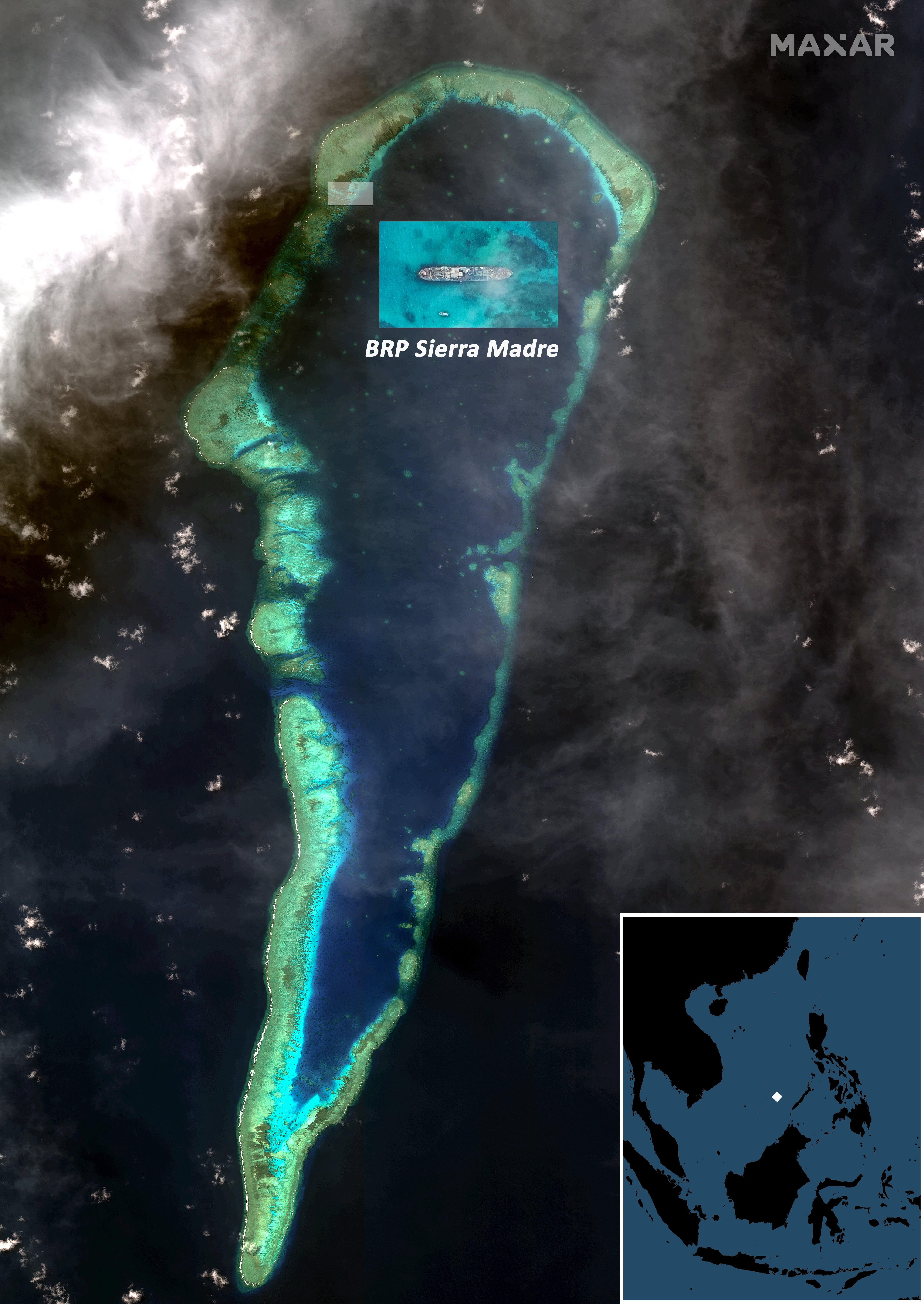
A Philippine sailor suffered severe injuries when Chinese forces blocked an Armed Forces of the Philippines resupply mission in the South China Sea, Pentagon officials confirmed to USNI News. The AFP mission to resupply the BRP Sierra Madre (LT-57) outpost at Second Thomas Shoal also resulted in damage to an unknown number of Philippine vessels.
The Philippine sailor was injured as a result of the “PRC vessels’ dangerous and deliberate use of water cannons, ramming, and blocking maneuvers,” reads a Monday statement from Office of the Secretary of Defense spokesperson U.S. Army Maj Pete Nguyen to USNI News.
This is the third instance of Philippine personnel getting injured by Chinese forces in their missions to resupply the Marine outpost at Second Thomas Shoal. The South China Sea feature has been the site of numerous incidents between China and the Philippines. These encounters have since escalated to include the injury of Philippine personnel, with the first reported incident injuring four sailors during a March resupply mission.
While the Pentagon statement did not specify which vessels were involved, Ray Powell, director of the SeaLight Project at Stanford University’s Gordian Knot Center for National Security Innovation, spotted Philippine Coast Guard vessel BRP Bacagay (MRRV-4110) operating in the vicinity of Second Thomas Shoal and swarmed by Chinese vessels. No other Philippine vessels were seen on maritime trackers during the reported time of the incident.

While the Pentagon referred USNI News to the Philippine government for additional details, Manila has not released imagery nor a timeline of events since the incident. When China blocked previous resupply missions, officials have quickly released images and videos.
Jay Tarriela, a spokesperson for the National Task Force for the West Philippine Sea, told reporters that he could not comment on the incident, as it was an Armed Forces of the Philippines operation. Tarriela in the past has been quick to issue statements on Chinese blockades.
Chinese state media first reported on the incident on Monday morning and justified the use of “control measures” against the Philippine vessels as lawful. The China Coast Guard claimed that the Philippine resupply vessel violated International Regulations for Preventing Collisions at Sea and caused the collision. “The responsibility for the incident lies entirely with the Philippine side,” reads the China Coast Guard release.
Meanwhile, a Philippine government release from the National Task Force on the West Philippine Sea stated that ships from the People’s Liberation Army Navy, China Coast Guard and Chinese Maritime Militia performed “dangerous maneuvers.” However, there is no mention of injury to Philippine personnel in the release. The statement also claimed that Chinese forces rammed and towed Philippine vessels, although it’s unclear to what extent the latter occurred during the incident. This is the first reported instance of China towing – defined as pulling, pushing or hauling – Philippine vessels in their South China Sea disputes.
“We stand with our Philippine allies and condemn the escalatory and irresponsible actions by the PRC to deny the Philippines from executing a lawful maritime operation in the South China Sea,” reads the Pentagon statement.
Manilla and Washington have a mutual defense pact that could go into effect if Chinese forces attack Philippine Armed Forces or Philippine Coast Guard personnel.
“The United States reaffirms that Article IV of the 1951 U.S.-Philippines Mutual Defense Treaty extends to armed attacks on Philippine armed forces, public vessels, or aircraft – including those of its Coast Guard – anywhere in the South China Sea,” reads a March U.S. State Department statement to USNI News.
In May, Philippine president Fredinand Marcos said that the death of any Filipino during operations in the South China Sea would “cross a red line.”
“If a Filipino citizen was killed by a wilful act, that is very close to what we define as an act of war,” Marcos said in May during the Shagri-La dialouge. “We would have crossed the Rubicon. Is that a red line? Almost certainly.”
https://news.google.com/rss/articles/CBMifGh0dHBzOi8vbmV3cy51c25pLm9yZy8yMDI0LzA2LzE3L3BoaWxpcHBpbmUtc2FpbG9yLXNldmVyZWx5LWluanVyZWQtdmVzc2Vscy1kYW1hZ2VkLWFzLWNoaW5lc2UtYmxvY2stc291dGgtY2hpbmEtc2VhLW1pc3Npb27SAQA?oc=5
2024-06-17 20:18:00Z
Tidak ada komentar:
Posting Komentar